Contemporary territories are unstable, subject to fast conversion processes, and complex in the decision, design, management and transformation areas. They undergo continuous changes, which lead to transitory and unclear solutions. In other words, that they represent “weak” or unstructured problems since they are characterized by multiple actors, many and often conflicting values and views, and a wealth of possible outcomes and high uncertainty. In this context, a very useful aid is provided by Multicriteria Analysis methods, which are used to make a comparative assessment of alternative projects or heterogeneous measures. These methods allow several criteria to be taken into account simultaneously in a complex situation and they are designed to help Decision Makers to integrate the different options, which reflect the opinions of the involved actors, in a prospective or retrospective framework. Participation of the Decision Makers in the process is a central part of the approach.
- Recognition of the relevant stakeholders having a role in the decision problem under investigation, defining relative needs and interests in the system. Stakeholders classification and mapping in order to identify their expectations and to define the objectives and values to be considered in the decision process.
- Comprehensive and systemic evaluation of alternative transformation scenarios through the measurement of the performance of the considered options with reference to different objectives and criteria through the implementation of several MCA methods, such as Analytic Hiearchy Process, Analytic Network Process, ELECTRE, Multi-Attribute Value Theory etc.
- Establishment of priorities and production of projects ranking for leading the choice among multiple options, including in the evaluation the preferences of experts and Decision Makers through the organization of interviews and focus groups.
- Creation of specific evaluation maps through the application of the Spatial Multicriteria Analysis, which combines Geographic Information Systems and Multicriteria Analysis in order to transform and integrate spatial data and Decision Maker’s preferences and uncertainties and to obtain an overall assessment of the decision alternatives.
- Performing sensitivity analysis through “what if” kind of question to see if the final results of the evaluation model are stable when the inputs, whether judgments or priorities, are changed.
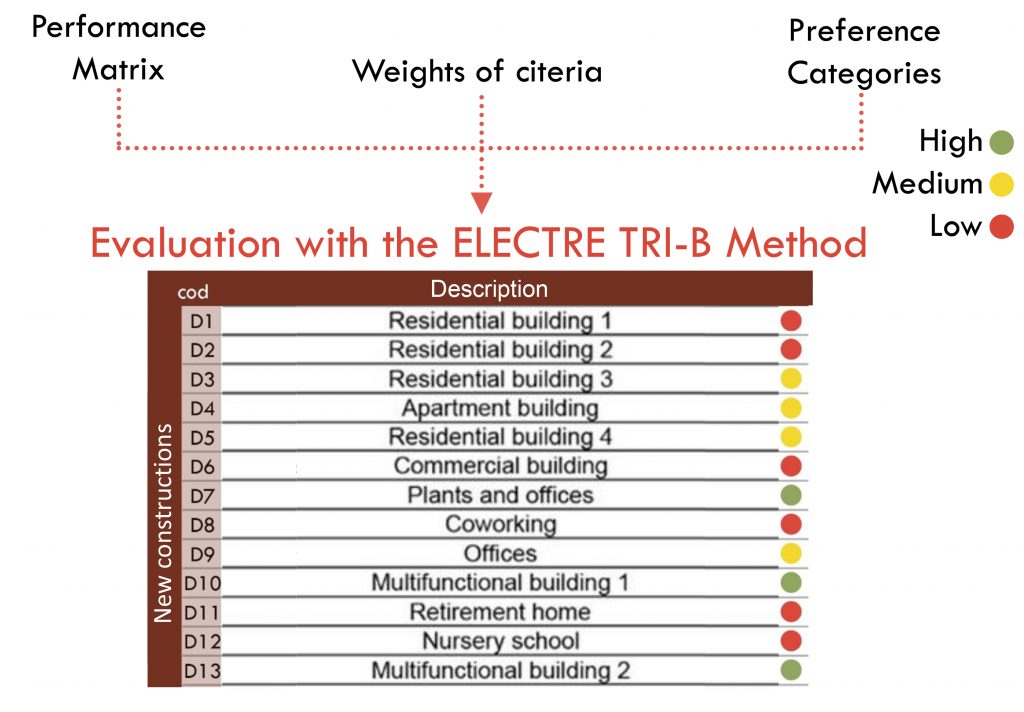
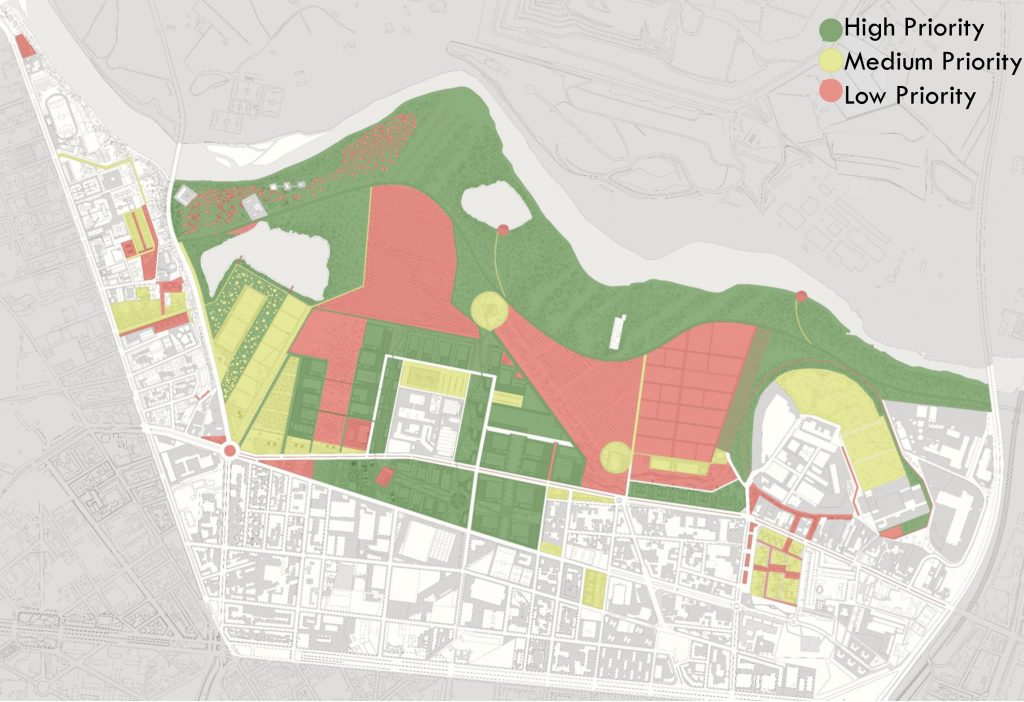
BOTTERO, M., OPPIO, A. (2018) Multicriteria evaluation of urban regeneration processes: An application of PROMETHEE method in northern Italy. Advances in Operations Research.
BERTA, M., BOTTERO, M., FERRETTI, V. (2018). A mixed methods approach for the integration of urban design and economic evaluation: Industrial heritage and urban regeneration in China. Environment and Planning., Urban Analytics and City Science, 45 (2).
OPPIO, A., BOTTERO, M., ARCIDIACONO, A. (2018). Assessing urban quality: a proposal for a MCDA evaluation framework. Annals of operations research, pp 1-18, ISSN: 0254-5330.
OPPIO, A., BOTTERO, M. (2018). A strategic management based on multicriteria decision analysis: An application for the Alpine regions.International journal of multicriteria decision making, pp 236-262, ISSN: 2040-1078.
BOTTERO, M., OPPIO, A. (2019) Ranking of adaptive reuse strategies for abandoned industrial heritage in vulnerable contexts: A multiple criteria decision aiding approach. Sustainability 11(3), 785.
BOTTERO, M., DELL’ANNA, F., GOBBO, G. (2019). A PROMETHEE-based approach for designing the reuse of an abandoned railway in the Monferrato Region (Italy). International Journal of Multicriteria Decision Making, 8(1), 60-83.
Indicators and integrated models
Indicator means a parameter that measures a phenomenon by giving information about its general status and specific elements. (Jesinghaus 2000, OCDE, 2003). Over the last decades, sets of indicators raised their importance in the ambit of urban and territorial planning as supporting tool to the evaluation and monitoring of complex phenomena that affect urban and territorial systems.
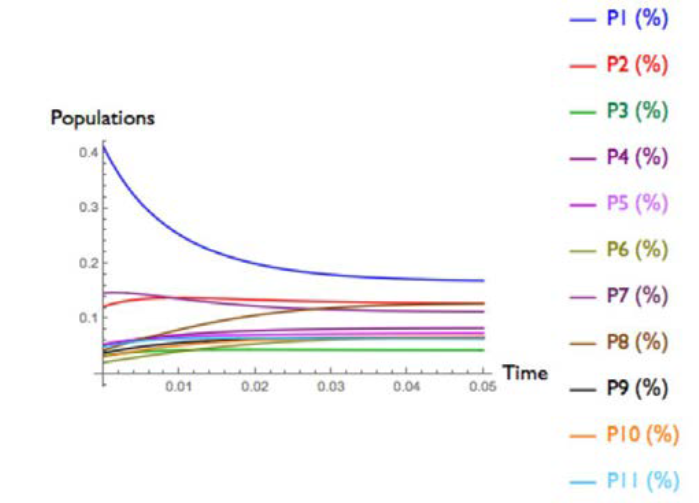
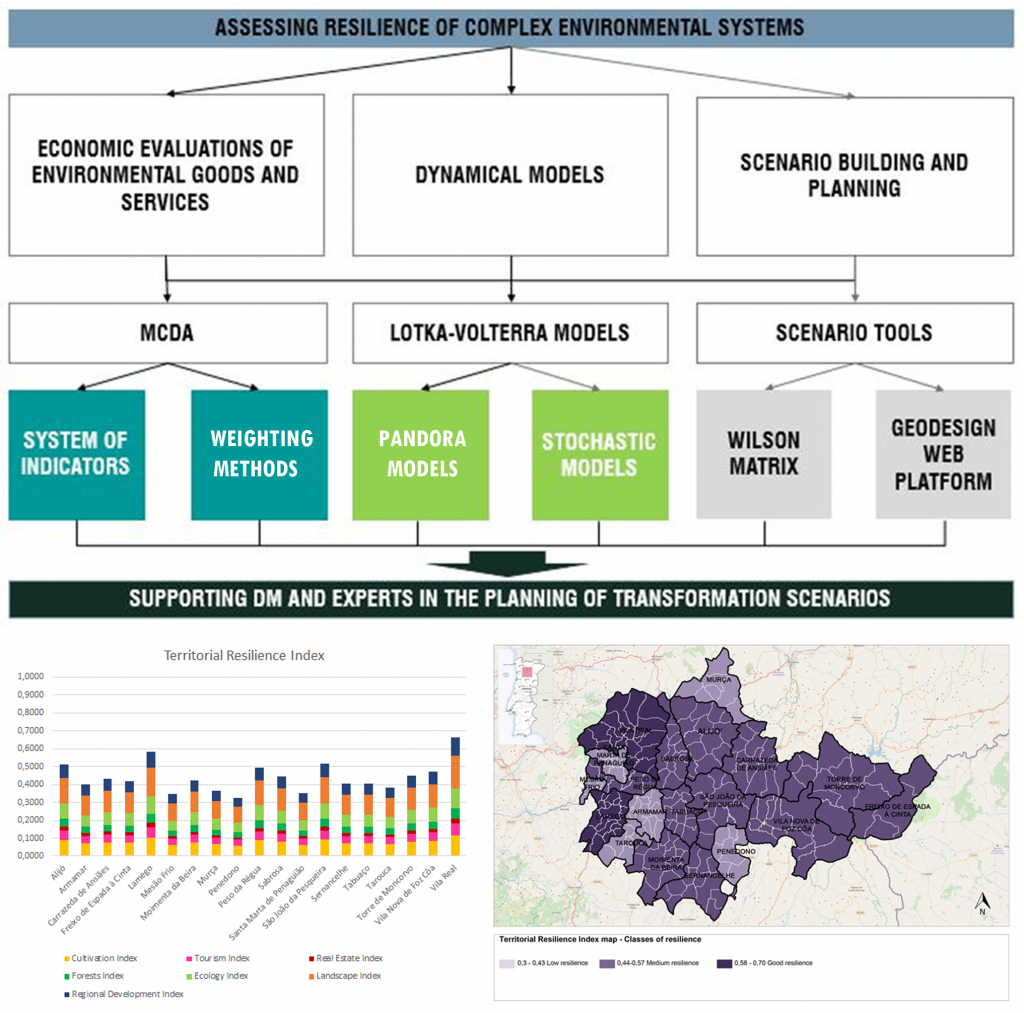
The combination of sets of indicators within integrated models, in the fields of Landscape Ecology, such as the Lotka-Volterra mathematical models, and Evaluation approaches, as the Multicriteria Decision Analysis (MCDA) may support the decision-making process in the definition of future strategic scenarios, thus looking for a high quality of life.
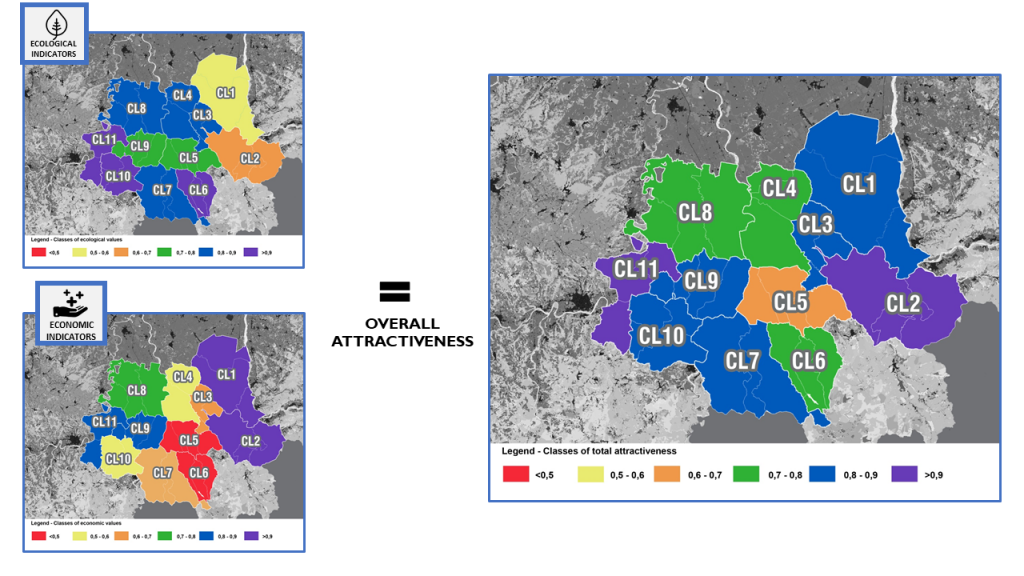
ASSUMMA, V., BOTTERO, M., DATOLA, G., DE ANGELIS, E., MONACO, R. (2020). Dynamic Models for Exploring the Resilience in Territorial Scenarios. Sustainability, 12(1), 3.
ASSUMMA, V., BOTTERO, M., MONACO, R. (2019). Landscape Economic Attractiveness: An Integrated Methodology for Exploring the Rural Landscapes in Piedmont (Italy), Land, 8(7), 105.
ASSUMMA, V., BOTTERO, M., MONACO, R., SOARES, A.J. (2018). An integrated evaluation methodology to measure ecological and economic landscape states for territorial transformation scenarios: an application in Piedmont (Italy). Ecological Indicators, 105, 156-165.
ASSUMMA, V., BOTTERO, M., MONACO, R., MONDINI, G. (2018). Assessing the landscape value: An integrated approach to measure the attractiveness and pressures of the vineyard landscape of piedmont (Italy). In: Calabrò F., Della Spina L., Bevilacqua C. (eds) New Metropolitan Perspectives. ISHT 2018. Smart Innovation, Systems and Technologies, vol 101. Springer, Cham.
